Contents
Melon Pineapple is the most popular and beloved by many variety. Despite such an exotic name, this melon culture is perfectly adapted to any climate and can be successfully grown in vegetable gardens and greenhouses. On the basis of this variety, several hybrids have been bred that differ in shape, weight, color of the peel and pulp, but they all have one thing in common – a constant aroma and taste, reminiscent of a mixture of melon and pineapple.
Variety description
The classic pineapple melon is a mid-season variety intended for growing in the garden. The fruits are oblong, regular oval in shape, medium in size (1,5–3 kg). The bright yellow peel is rather thin, slightly bumpy, covered with a gray or brownish reticulate pattern.
The flesh of the fruit is yellow with a slight pinkish tint, juicy, very sweet, oily in texture, has an amazing taste that combines melon and pineapple. The fruits have a characteristic aroma, where melon predominates, and pineapple organically complements it. This variety is distinguished by a high content of fiber, carotene, minerals (potassium, sodium), vitamins (P, A, C) and organic acids in the pulp. Such a fruit perfectly quenches thirst, refreshes and tones.
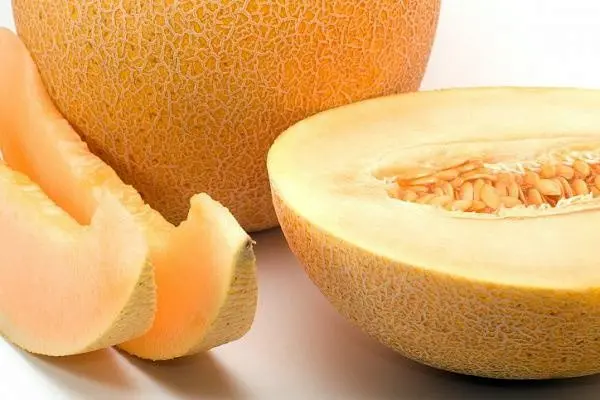
As already mentioned, pineapple melon has several hybrid subspecies:
- Pineapple GOLD. Mid-season hybrid, characterized by a greenish bumpy skin with a slightly corrugated surface. The color of the flesh varies from bright yellow to reddish with a green edge under the skin. The taste of this variety is sweetish-sugary, a little tropical, with a pronounced presence of pineapple.
- Melon Sweet pineapple F1. Early maturing hybrid. It can be grown both in the greenhouse and in the open field. The fruits are small (1,5–2 kg), more often have a rounded shape, but there are also oblong ones. The peel is yellow, rough, covered with a gray, yellow-brown or greenish mesh. The flesh is light yellow or orange, with a constant green stripe under the skin. It tastes very sweet, soft in texture, literally melting in your mouth, has a pronounced taste and aroma of pineapple.
- Melon American pineapple. Mid-season hybrid for cultivation in an open ground. It has a high yield and resistance to cold. The fruits are round in shape and have a small mass (1,8–2,5 kg). The color of the peel varies from greenish-cream to beige. The skin is thin, covered with a thick openwork mesh. The flesh is whitish-cream, greenish at the edge, very sweet and juicy, tastes like pineapple.
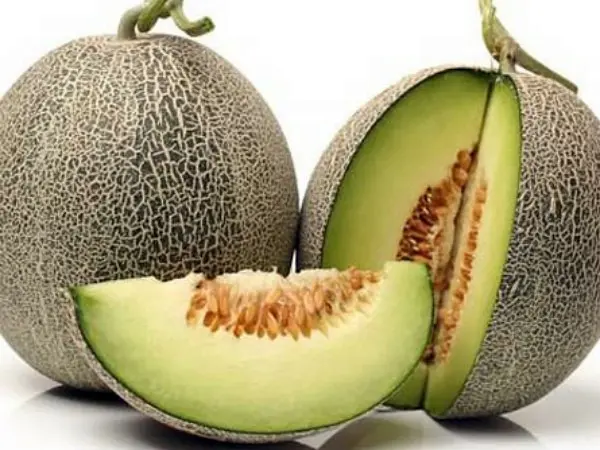
Sometimes the American pineapple is confused with the Americano pineapple variety. But it should be noted that these fruits are completely different. Americano is another super early pineapple hybrid. The fruits of this miniature (200-400 g) melon are placed in the hand, and it has a very decorative appearance: the peel is bright yellow, with contrasting vertical stripes of brown. The pulp of such a fruit is white, very juicy, with a subtle taste of pineapple.
Characterization
Any variety of pineapple melon is perfectly adapted to difficult weather and climatic conditions. Culture can be easily grown in both southern and northern regions. The period of full vegetation from germination to technical maturity for mid-ripening varieties is 80–90 days, for early varieties – 65–70 days. Melons have stable immunity to fungal diseases (anthracnose), powdery mildew, late blight.
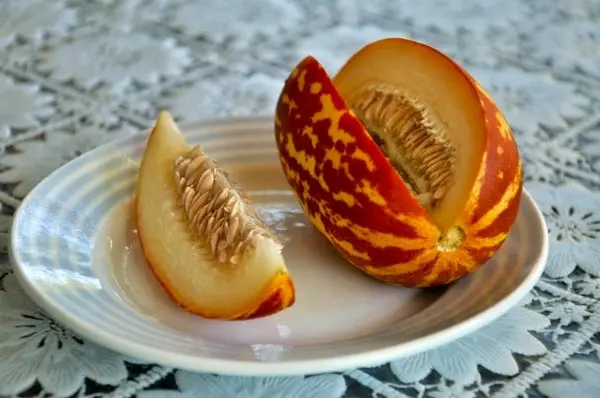
Pineapple varieties are characterized by high yield, which is achieved by abundant and simultaneous fruit formation. The melons of such melons are prone to intensive growth, therefore it is recommended to plant plants at a distance of 80-100 cm from each other. Pineapple melons are stored for a long time and are well transported. They are eaten both fresh and processed: dried, in the form of juices, jams, various desserts.
Features of agricultural technology
If the climate of your region does not have a large number of warm and sunny days, then it is better to grow pineapple melon from seedlings. There is nothing complicated about this – first, the seeds are germinated in a damp cloth, and then sown in pots. Sowing is carried out around the beginning of April, and then after 3 weeks, if the soil has warmed up well, the plants can be transplanted into the ground.
Alternatively, this variety of melon can be grown in a greenhouse – then the harvest is guaranteed, even in northern climates. Seeds are sown in the soil when the temperature of the earth reaches +15 ° C. In a temperate climate, this degree is reached around mid-May. Seedlings also love the sun and heat, so they are planted when the daytime air temperature is set at 25–30 ° C.
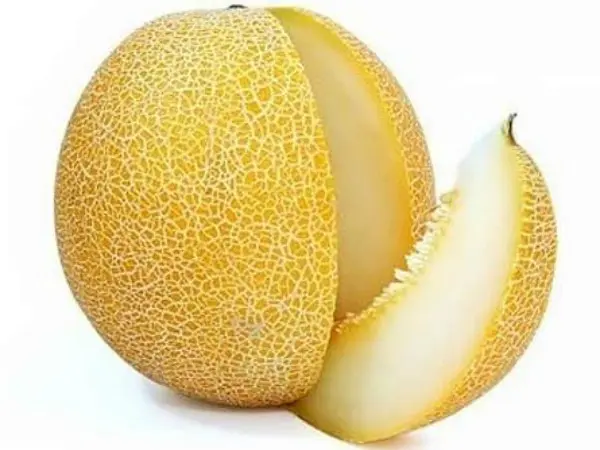
For pineapple melons, good fertile soil is very important, since the taste of the fruit depends on its quality. In heavy clay soil, seedlings grow weak, with poor ovary, while in fertile soil, the fruits grow sweet and fragrant, and their number is simply amazing.
The pineapple variety of melons gives a good harvest in loose soil enriched with organic matter (compost, vermicompost).
The plot for the garden should be chosen sunny. During the period of active vegetation (before flowering), plants must be protected from drought, hypothermia, including sudden changes in temperature. If the night temperature is much lower than the daytime temperature, it is recommended to cover the bed at night with a film. While the plants are still small, they can be covered with plastic bottles cut in half.
In warm soil, pineapple melon seeds germinate fairly quickly. In order for seedlings to appear as early as possible, it is necessary to properly sow the planting material. One of the most common mistakes is the deepening of seeds by a few (4–5) cm, and sowing by 1–1,5 cm is considered the optimal depth. In this case, the seeds fall into the heated soil layer, due to which they give quick shoots.
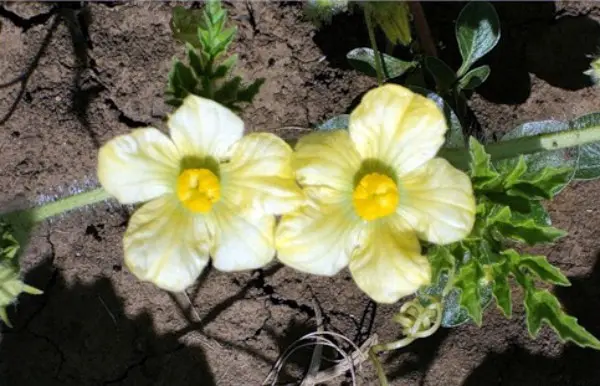
Care
Caring for pineapple melon is no more difficult than for any melon crop. The grown plants are no longer afraid of temperature changes, they easily tolerate cold snaps, however, the hybrid is considered more demanding of heat and sun.
In general, all care measures are the same for all pineapple melons and are as follows:
- the bed must be regularly loosened – this procedure ensures the supply of oxygen to the roots;
- many vegetable growers mulch the garden, which makes it easier for them to take care of the plants – if there is mulch, there is no need for weeding and loosening, since organic matter (straw, peat, sawdust) protects the soil from weed germination, crusting and drying out;
- watering is carried out as needed – the soil should be well moistened during the active growing season, then it should be watered less often.
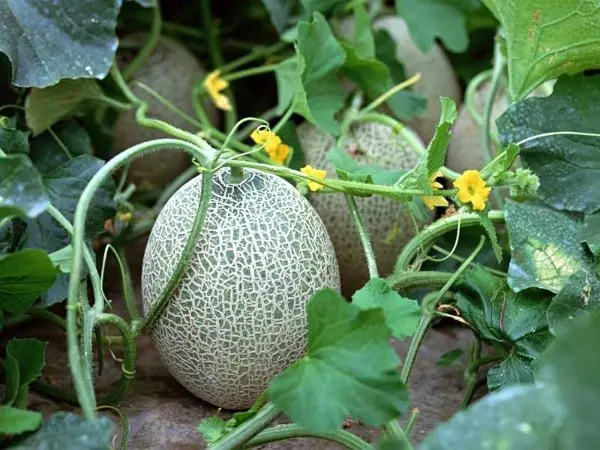
The most important agrotechnical technique in growing a pineapple variety is pinching the lashes. It is important to know that the plant forms ovaries only on stems of the third order. As soon as the shoot has the first 4-5 leaves, it is necessary to pinch off the top above the third leaf. Soon, second-order shoots will sprout from the axils of the remaining leaves. As soon as they reach the phase of 4-5 leaves, the two upper shoots are pinched again, and the lowest one is removed. Then shoots of the third order will grow, and flower stalks will appear on them, and then ovaries.
When the ovaries reach a size of 4-5 cm, the weakest shoots are removed, leaving 5-6 of the strongest, which have the largest ovaries.
In order for the fruits to grow large and juicy, no more than one ovary should be left on one branch. If you leave more, the melons will turn out small.
Pineapple melons rarely get sick, but they are often attacked by harmful insects (mites, whiteflies). At an early stage, this scourge can be dealt with with the help of folk remedies: a solution of ash, whey with laundry soap. In advanced cases, when a lot of pests have formed, insecticides remain the only way to fight.
Video “Melon Seeds Pineapple”
Thanks to this video, you will see what melon seeds look like, get acquainted with the characteristics and features of this mid-season variety.









